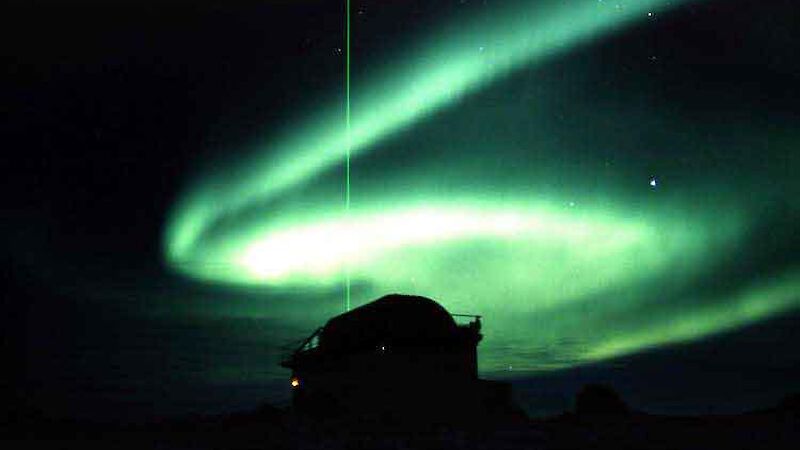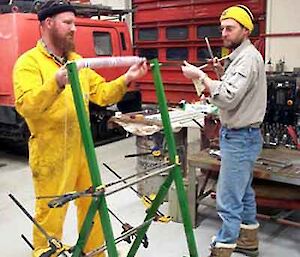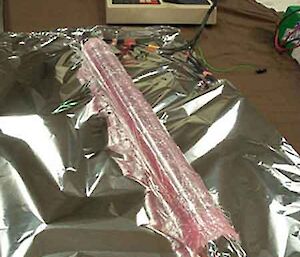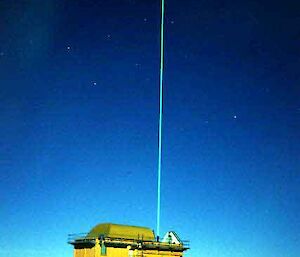30 August 2002
What do two physicists, a chef, an electrician, a diesel mechanic and a communications technician have in common?
If you had been at Davis in the last couple of weeks (mid-July 2002), you would have answered A lot!
When the LIDAR stopped working recently and the trouble was diagnosed as a problem capacitor, the space and atmospheric scientists were not too happy. They had no spares and the first ship which could bring the necessary parts was not expected for many more months!
The Davis LIDAR (Light Detection and Ranging Instrument) is one of only three such instruments in the southern hemisphere.
The problem capacitor should charge up and direct energy into the flash lamp and start the high speed laser process. The resulting high speed, luminous green laser beam probes the skies at high altitudes investigating climate change.
Determined to find a solution, the two wintering scientists put out a plea for assistance.
Although capacitors are common components in a range of electronic equipment, the voltage of this particular one was unusual. The comms tech and electrician rallied to the call and found similar parts, although they were unusable without modification. The comms officer concentrated on ways in which to modify the parts to suit the LIDAR’s needs.
Meanwhile, the electrician and station diesel mechanic decided to build a new one from scratch — of necessity from non-standard components. Enter the chef, who donated generously from the station kitchen supplies of plastic cling wrap and aluminium foil!
As a team, the men joined forces with the two physicists and built a machine to wind up the plastic and foil capacitor.
By this time, the comms tech’s modified component was ready for testing. Although it worked to some degree, added power was needed, and the addition of the home made version to the power supply seemed to do the trick!
As the values of the home-made products are lower than the commercial brands, the creative team got together to produce a few more.
The first four capacitors have now rumbled off the production line and individual tests show success in maintaining voltage over a two-hour period. More capacitors are being made and the real test will be when they are linked in series and the characteristic green light re-appears in the sky at Davis.
Without the ingenuity and team work of the scientists and trades people on station, the LIDAR would have lain idle for the rest of the winter. As it is, it has passed all the preliminary testing and should soon be shining its characteristic green light into the atmosphere.
UPDATE: The LIDAR has been functioning well since the addition of the improvised capacitors. New “standard” components will be installed this (Austral) summer.




